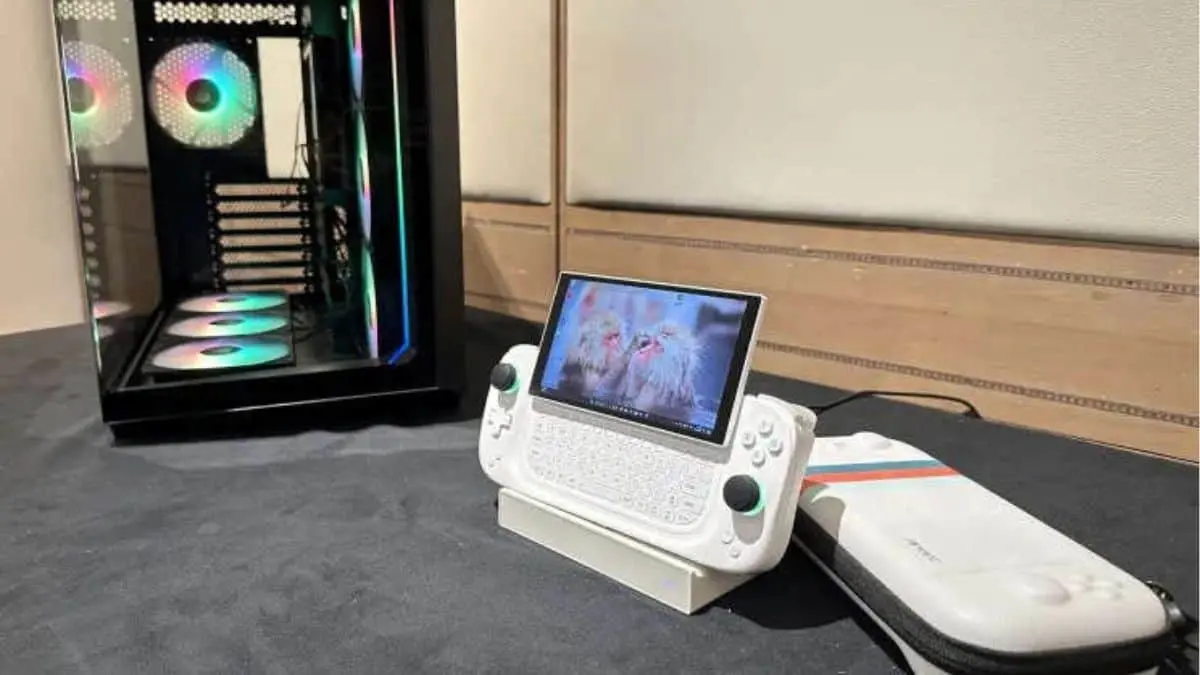TL;DR: Antec is going to be selling a Steam Deck competitive device, based on the Ayaneo Slide. The device has a slide up screen that reveals a keyboard, which is good because using desktop windows is much easier with a keyboard. However the device’s lowest estimated power draw at low/no load is 15w, meaning it will use comparable power to the deck running at max power. This means the battery life will probably be pretty rough when compared to the Deck. It will also likely have a much higher price point.



How is this a contradiction? It seems like it’d be the opposite. Translation layers reduce performance as they translate programs from one system to another, so the fact that Linux can run games in a translation layer and still get as good, or better, performance than Windows means that Linux is fast enough to make up for the translation layer performance penalty.
Regardless, here are some benchmarks.
From 2019, Windows 10 vs Pop_OS:
https://www.forbes.com/sites/jasonevangelho/2019/07/17/these-windows-10-vs-pop-os-benchmarks-reveal-a-surprising-truth-about-linux-gaming-performance/?sh=6035a5e65e74
While these are all in 1080p, several are also running in translation layers. The ones that are running native were faster in Linux, while the ones running in proton achieved roughly the same performance. This was also 4~5 yrs ago, and proton has improved a lot. Additionally, these were run on an Nvidia card using their proprietary drivers, and Linux is known to be AMD-biased.
So here’s another one from a couple years ago with Windows 11 vs Manjaro (benchmark totals for 4k, 1440p and 1080p at the end): https://m.youtube.com/watch?v=xwmNLqJL7Zo
While they found that games tended to perform better on windows in 4k, they also found that games in 1440p were roughly the same while 1080p averaged faster on Linux despite running in a mix of proton, Proton-GE, and wine. This is also a couple years old though, and while the average might be better on Linux, there were some pretty significant performance gaps at the top and bottom of the chart.
Here’s a third one from about 6 months ago. This was pretty highly circulated on Lemmy, so I’m surprised you didn’t see it, but here it is:
https://discuss.tchncs.de/post/5340976
They claim to have seen an average 17% improvement on the games they benchmarked, and included a video of the benchmarks. There was a later benchmark where they claimed they got +20% performance using a tweaked version of Garuda Linux, but that required user tweaks and I’m mainly concerned with “un-tweaked” performance.
Linux isn’t perfect, and if you want to play games with no hassle, then Windows is probably still your best bet. However, in situations where you’re trying to squeeze as much performance as you can out of an underpowered device, Linux just seems obvious. You have standardized hardware that allows you to spend the time and effort to iron out bugs and deficiencies with fewer edge cases than you’d get with non-standardized hardware. I think that’s why Steam(Deck) OS is so good. It runs on standardized hardware and so it’s easy for Valve to configure and optimize for user-friendliness because they don’t have to worry about ten billion different hardware configurations.
Also, as a side note, I’ve found that older games just run better on Linux. They ironically tend to be way less of a hassle to get working. It’s because Wine (and I think Proton/Proton-GE) have compatibility for 16bit programs, while windows doesn’t. You have to run a virtual machine with Windows XP or earlier to run 16bit programs, and I’ve found that to be a mess.
Seriously, I cannot get a Windows 98 virtual machine set up on Windows 10 to save my life. It just won’t properly install on software like VMWare, and I’ve had to resort to actual PC emulators to get 16bit games to run on a modern windows PC (which are slow as fuck). I’ve read it has something to do with AMD CPUs? I don’t know what the specific issue is though, just that it supposedly works just fine on Intel but not AMD. However, I haven’t encountered that mess on Linux.
Edit: as an amusing side-side note, I’m old enough that a number of my favorite games from when I was growing up are no longer able to run on Windows because they require a 16bit OS (or a 32bit OS with 16bit compatibility). Despite that, my grandfather’s Hoyle card game that’s older than I am, still somehow runs flawlessly on Windows 10. What the fuck?
I don’t know how to tell you, but these benchmarks doesn’t say anything if there’s not any technical discussion. Sometimes yes games run better on linux, and the reasons are not that linux is faster. It has to do with mainly two reasons, dx10 or dx11 might cause bottleneck that is resolved by the translation layer in vk3d, for games that have that issue. Second all the features of dx is not supported, you might think that the game looks ok in linux while it looks and feels different on windows. You might have shadows or lightning that is rendered differently, you put your graphics settings on ultra and on windows that might include hdr and linux it doesn’t exist. So of course the games run faster if it doesn’t have to do the same work. The game literally runs through a translation layer, it’s not fucking magic.
You think a youtube video or some fucking idiot at Forbes is going to convince me.
This is a benchmark that you can trust. https://www.phoronix.com/review/nvidia2022-windows11-linux
https://www.phoronix.com/review/radeon2022-windows-linux